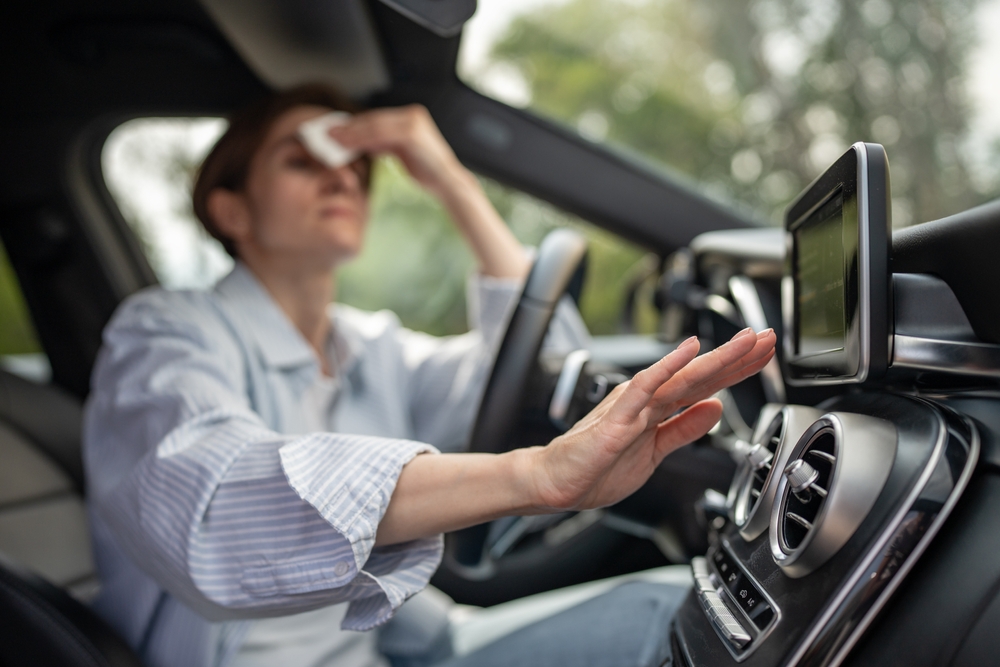While the UK may not experience the extreme heatwaves seen in other parts of the world, there are still those summer days when your car can feel more like an oven than a comfortable mode of transport.
Whether you’re stuck in a slow-moving traffic jam on a rare sweltering afternoon or just parked in direct sunlight for a few hours, maintaining a cool interior is essential for both comfort and safety. Here are some tips to keep the temperature down in your car.
1. Park in the Shade Whenever Possible
It may seem like the most obvious solution, but parking in the shade is one of the easiest ways to keep your car cool. If you’re parking for a longer period, look for shaded areas like under trees, behind buildings, or in covered car parks. Not only will this help keep the temperature in check, but it will also protect your dashboard and upholstery from sun damage, which can cause fading and cracking over time
If shaded parking isn’t available, try to orient your car so that the sun isn’t shining directly into the cabin through the windscreen. Parking with your car’s rear facing the sun will keep the front seats and steering wheel cooler.
2. Use Sunshades and Window Covers
A simple yet effective way to reduce the heat buildup in your car is to use sunshades. These reflective shields, placed inside the windscreen, block out sunlight and significantly lower the interior temperature. You can find inexpensive sunshades designed specifically for the windscreen, and they fold away compactly when not in use.
Additionally, investing in window covers for the side windows is an excellent way to protect the whole interior from sun exposure. Suppliers like Car Shades offer high-quality, tailored sunshades that fit seamlessly to the rear windows of most car models, blocking UV rays and reducing heat. Unlike aftermarket tinting, these sunshades are removable, making them ideal for people who prefer flexibility and don’t want to alter their vehicle permanently.

3. Ventilate Before You Drive
One effective way to quickly reduce the temperature inside a hot car is to ventilate it before driving. Open all the windows and, if possible, the doors for a few minutes to allow the hot air to escape. This simple action can bring the internal temperature down dramatically before you even switch on the engine
For an extra cooling boost, you can use a “fan trick”: with all the windows rolled down, turn the car’s air conditioning to full blast, directing the air toward the footwells. This helps force the hot air out of the vehicle more efficiently. Once the interior has cooled a little, close the windows and let the AC continue cooling the car
4. Tinted Windows or UV Films
Tinted windows and UV-blocking films can greatly reduce the amount of sunlight that enters your car, helping to keep the temperature down. While window tinting is regulated in the UK and certain limits apply to the front windows, you can still apply tints to the rear side and back windows. Not only does this help reduce heat, but it also blocks harmful UV rays, providing protection for your skin and preventing the interior from fading.
If tinting isn’t for you, UV films offer a less permanent alternative. These can be applied to your windows and removed when not needed, providing similar benefits without altering the appearance of your car.
5. Plan Your Driving Times
If possible, plan your journeys to avoid peak sunlight hours. The midday sun is usually the hottest, so driving earlier in the morning or later in the afternoon can make for a more comfortable ride. Plus, avoiding the heat of the day can also help you dodge the worst of the traffic, which is a win in itself.
Conclusion
From parking in the shade and using reflective sunshades to investing in effective air conditioning and UV-blocking products, these tips will help ensure that your car stays cooler, more comfortable, and safer to drive – no matter what the weather throws your way.





